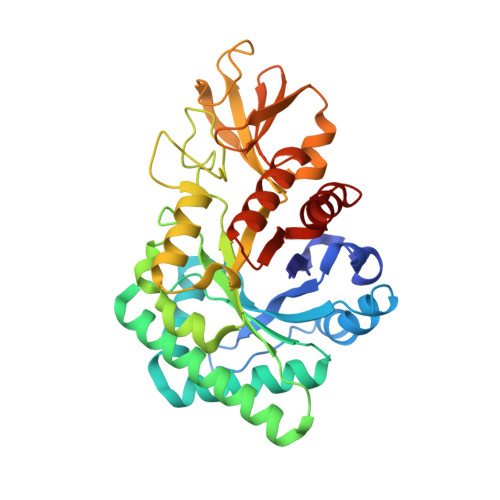Structural Basis for Carbohydrate Binding Properties of a Plant Chitinase-Like Agglutinin with Conserved Catalytic Machinery.
Sulzenbacher, G., Roig-Zamboni, V., Peumans, W.J., Henrissat, B., Van Damme, E.J., Bourne, Y.(2015) J Struct Biol 190: 115
- PubMed: 25727185
- DOI: https://doi.org/10.1016/j.jsb.2015.01.013
- Primary Citation of Related Structures:
4URI - PubMed Abstract:
A new chitinase-like agglutinin, RobpsCRA, related to family GH18 chitinases, has previously been identified in black locust (Robinia pseudoacacia) bark. The crystal structure of RobpsCRA at 1.85Å resolution reveals unusual molecular determinants responsible for the lack of its ancestral chitinase activity. Unlike other chitinase-like proteins, which lack chitinase catalytic residues, RobpsCRA has conserved its catalytic machinery. However, concerted rearrangements of loop regions coupled to non-conservative substitutions of aromatic residues central to the chitin-binding groove explain the lack of hydrolytic activity against chitin and the switch toward recognition of high-mannose type N-glycans. Identification of close homologs in flowering plants with conservation of sequence motifs associated to the structural adaptations seen in RobpsCRA defines an emerging class of agglutinins, as emphasized by a phylogenetic analysis, that are likely to share a similar carbohydrate binding specificity for high-mannose type N-glycans. This study illustrates the recent evolution and molecular adaptation of a versatile TIM-barrel scaffold within the ancestral GH18 family.
- Aix-Marseille University, AFMB UMR 7257, 13288 Marseille, France; CNRS, AFMB UMR 7257, 13288 Marseille, France.
Organizational Affiliation:



















